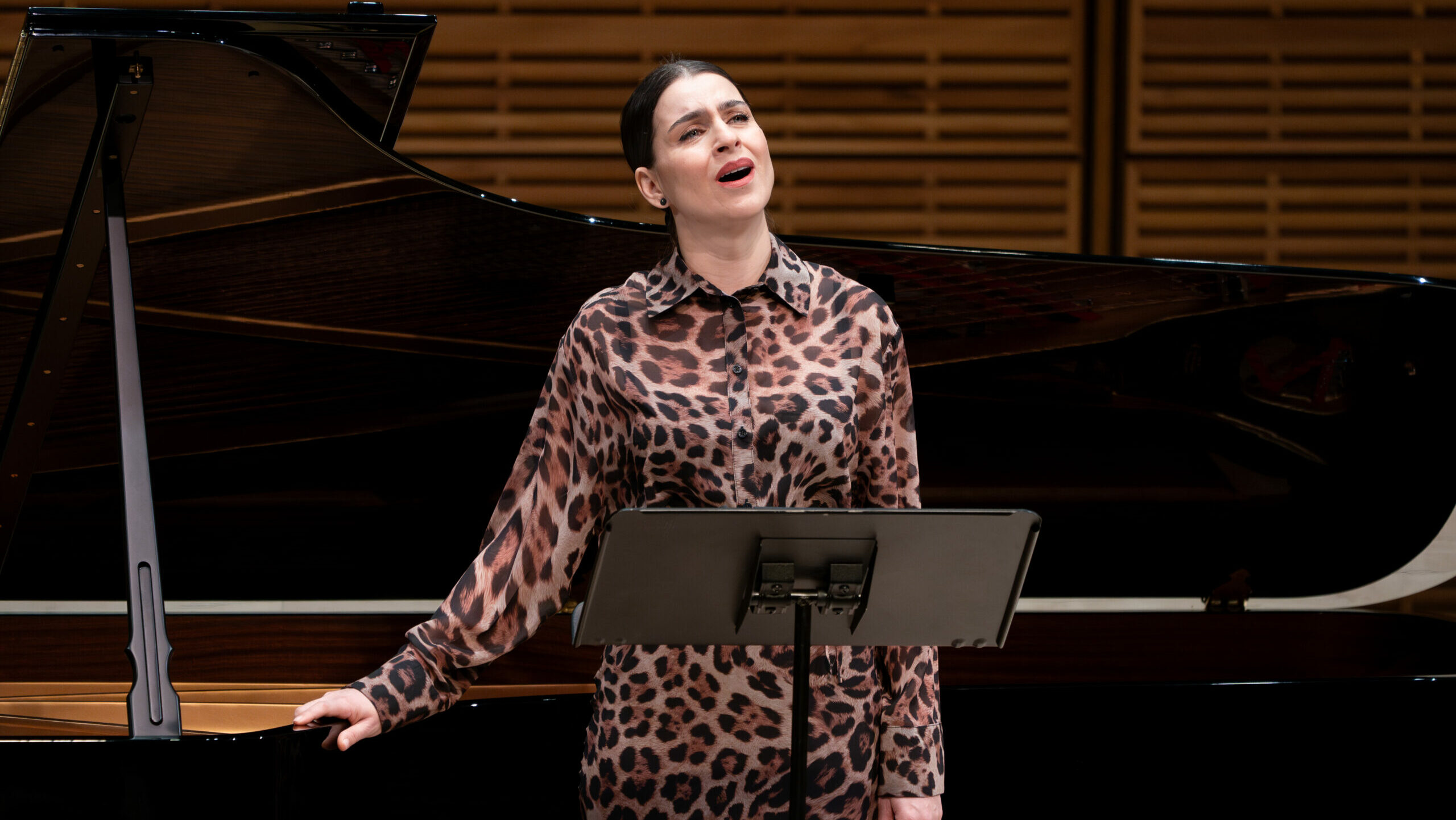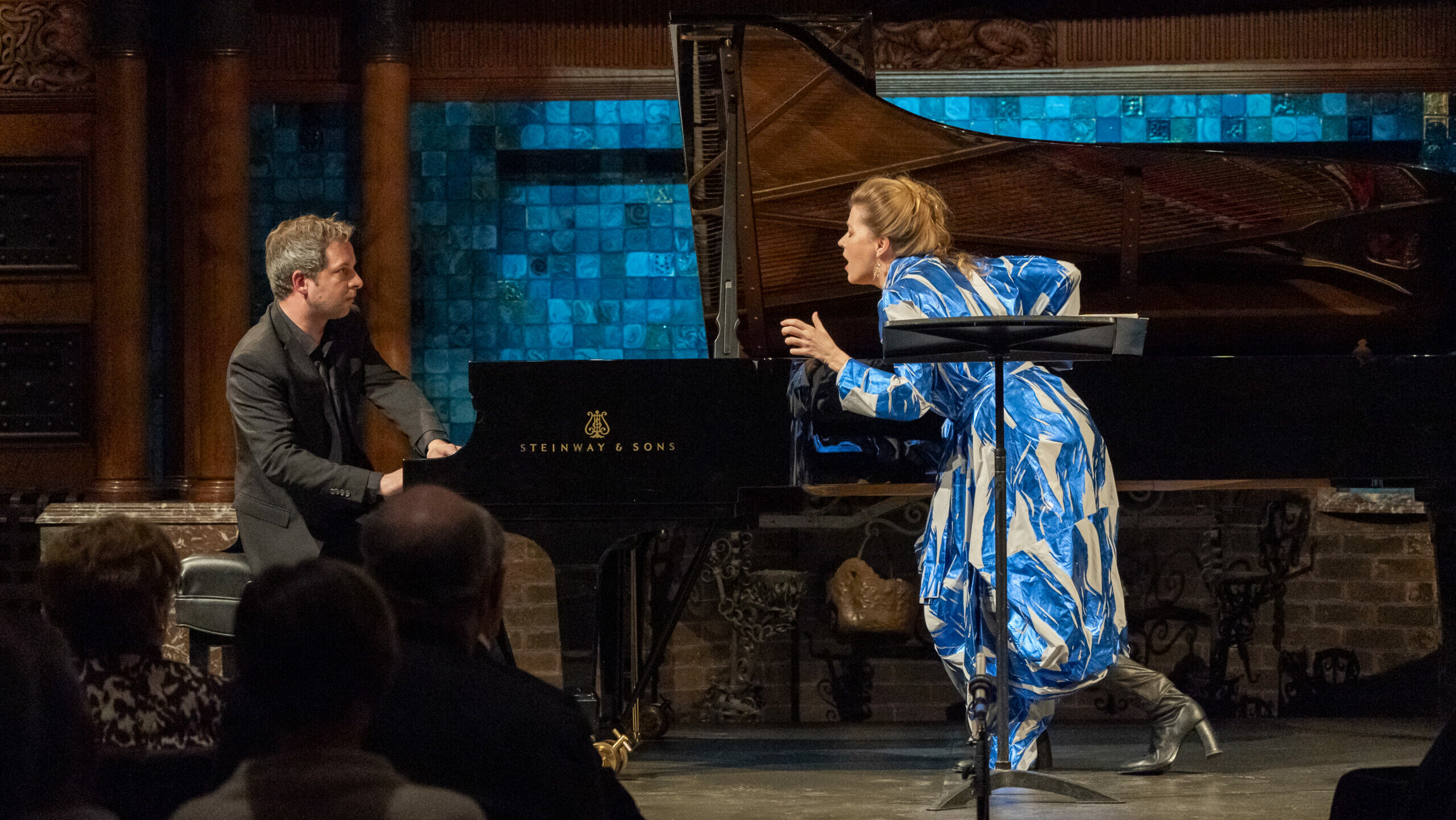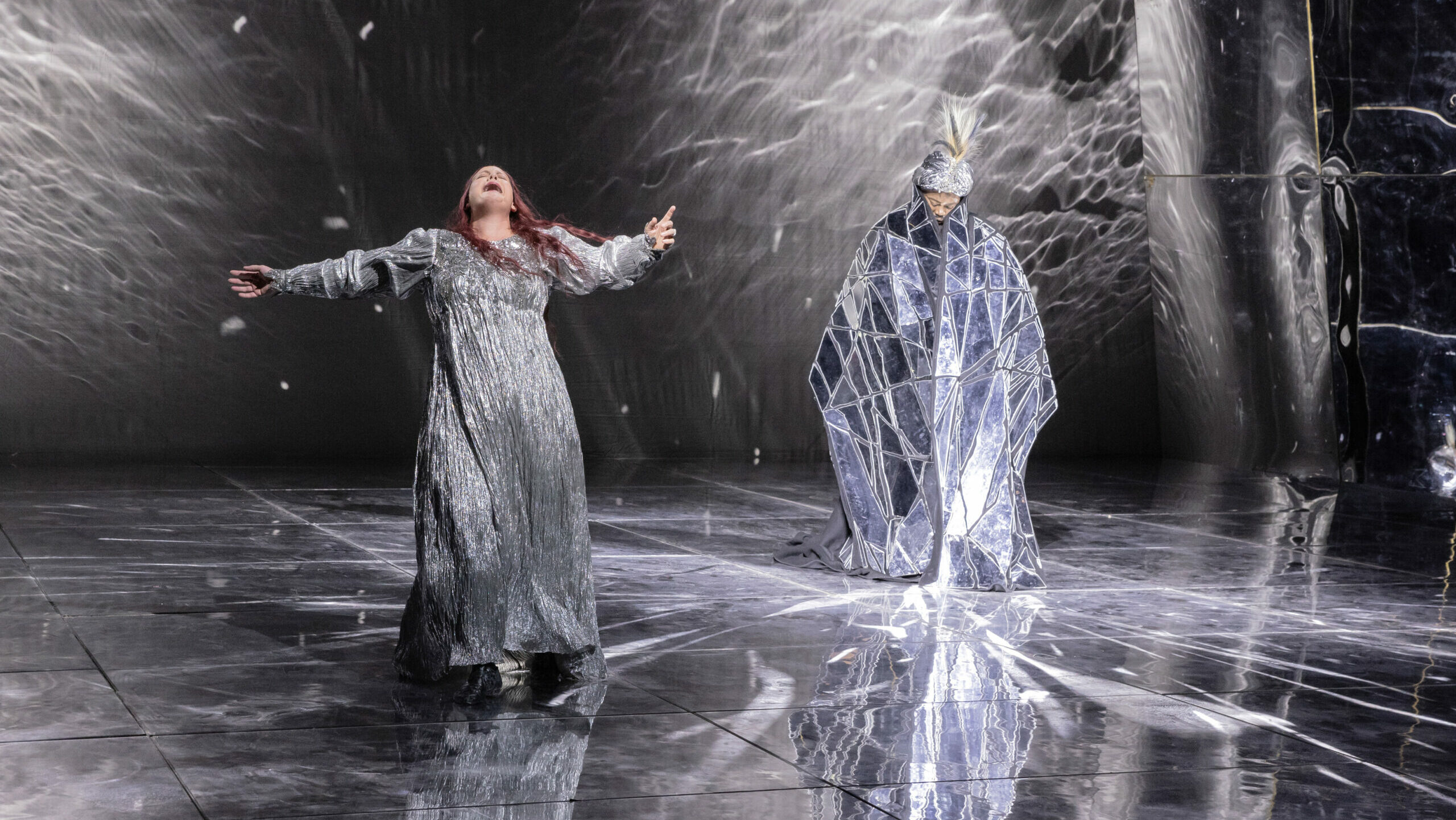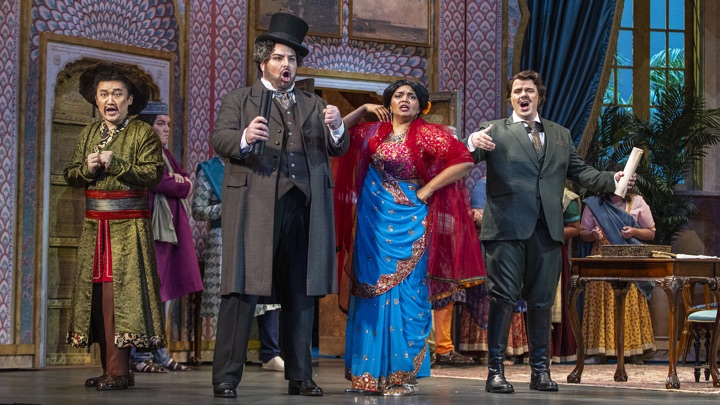

Such was the case with Opera San José’s production of Wolfgang Amadeus Mozart’s evergreen Le nozze di Figaro—one of the greatest operas ever written and certainly one of my top favorites—that opened their 2022-23 Season dedicated to the resilience of women, and was seen at its penultimate show last Friday, September 23.
The first of the towering trilogy of collaborations between Mozart and librettist Lorenzo Da Ponte, the 1786 Figaro was based on 1784 stage comedy by Pierre Beaumarchais titled La folle journée, ou le Mariage de Figaro (The Mad Day, or The Marriage of Figaro), the sequel of Le Barbier de Séville ou la Précaution inutile (The Barber of Seville or the Useless Precaution)—whose popular (at that time) adaptation as opera by Giovanni Paisiello might have nudged Mozart to adapt the sequel.
Beaumarchais’ comedy, with its frank denunciation of aristocratic privilege, shocked King Louis XVI who banned its public presentation. Beaumarchais had to tone the play down, removing most of the political themes.)
The Marriage of Figaro formed an important history to Opera San José, as it was the event for the grand opening of their beautiful home base California Theatre in 2004. For this season opener, Opera San José decided to explore the class conflict central to the story by transporting the opera to India, specifically during the British Raj, the time where the British Crown ruled over the Indian subcontinent (1858-1947).
OSJ pulled out the stops to hire cast and creative teams of mostly Indian or South Asian descent, and even went as far to have Antara Bhardwaj as a Cultural Consultant (and choreographer) for the show. The result transcended this beyond the usual superficial “opera reinterpretation” and elevated it into one of the most vivid stagings of Figaro ever!
Director Brad Dalton detailed the origin of the idea and the motivation behind it in his conversation with OSJ new General Director Shawna Lucey (in her inaugural season) printed on the program:
“[In 2019], the seed of the idea of this Figaro was planted [by then OSJ General Director] Khori Dastoor, and I realized it would be phenomenal for the opera. Part of my process has been to collaborate with Antara Bhardwaj [who serves as choreographer and cultural advisor] to ensure that we are being accurate to the place and time. In this production, [set in 1890] in Northern India, we observe the Count outside of his British peerage, where he has been given a little bit of power and is playing out a rather disruptive racist fantasy in which he projects his insecurities and desire for power, fear of aging, and fear of intimacy onto the Indian population. And I think it’s a [strong lens to view] what happened in India with the extraordinary repression from British colonial forces.”
The pièce de resistance of the performance was having Count and Countess Almaviva plus Doctor Bartolo performed by White singers dressed (by costume designer Deepsikha Chatterjee) in British colonial costumes, while the rest of the cast in various colorful Indian clothes. This juxtaposition no doubt established a sense of aristocracy closer to what Beaumarchais had in mind, even before the singers opened their mouths. I
n addition, the “extraordinary repression from British colonial forces” Dalton mentioned above was made even clearer in the treatment of Susanna by the Count here, and in the era of #MeToo movement, it highlighted the urgency of the issue into the present day much more than any other takes on Figaro. The duet “Crudel! perchè finora” that opened Act 3 became a suffocating display of how the power corrupted (especially since Susanna wasn’t even trying to be coy!)
Nevertheless, the strength of Dalton’s vision laid on the many details that he peppered throughout the whole performance, many of which provided the audience with new perspectives on the scenes. Take Cherubino’s aria in Act 2 “Voi che sapete”, for example.
Traditionally the piece is staged as Cherubino’s putting on a show for Countess Almaviva, but here he was canoodling the Countess while serenading her—as if to anticipate the events of La Mère coupable, Beaumarchais’ last play and a sequel of Figaro—and Susanna kept watch of the surrounding. In addition, I had never encountered the Count aria in Act 3 “Vedrò, mentr’io sospiro” reeking more privilege and entitlement than in this performance!
Other details were more influenced by Indian customs and traditions. An elderly lady was shown giving the Count bindi (the red dot on the forehead) and a yellow garland at the beginning of “Giovani liete” in Act 1, symbolizing accessing to inner wisdom and overcoming the ego. In a funny turn of event, she then took back the garland after the Count postponed giving Figaro the gesture for abolishing primae noctis (right of the first night)!
All the above seriousness didn’t mean that the show turned bleak and depressing, oh no, far from it! In fact, Dalton’s treatment was borderline slapstick in many scenes, particularly where the Indians were making fun of their employers. What truly refreshing to me was the way he effortlessly managed to maintain perfect balance between this dichotomy throughout this longish opera. (The performance last Friday clocked at 3 hours and 15 mins with a single intermission between Acts 2 and 3.)
Dalton received great help from his creative team in achieving his vision. Chatterjee’s costumes for the cast were a riot of kaleidoscopic colors that was truly a feast for the eyes, beautifully adorned by Nandini Joseph’s jewelries, while the British dressed mostly in European clothes of earthy tones and the well-known British Redcoat jackets (including for Cherubino during “Non più andrai”).
Interesting to note that she put the Countess in shades of red, similar to Susanna throughout the opera. I only wished that she didn’t dress both the Countess and Susanna in red head coverings for the final garden scene, as it could be very confusing from afar!
Steven C. Kemp’s three-part sets were simple and effective in indicating where the actions took place and giving the audience unblocked view of the stage, while Anshuman Bhatia’s soft lighting brought up the intricacy of Kemp’s sets. For garden scene, Kemp placed a circular flowerbed in the middle of the stage, where all the actions and confusions took place. Bhardwaj tapped into Indian classical and folk dances in her choreography, although I couldn’t resist drawing a comparison between her setting for the Wedding March (that opened the Finale of Act 3) and the exuberantly iconic finale of Slumdog Millionaire!
While the technical aspect of the production was excellent in so many different levels, the musical portion of the night was equally rich and rewarding. OSJ lavishly employed a largely excellent cast, with no roles being doubled. The Marriage of Figaro is, after all, an ensemble piece, where the actions are interwoven between the individual arias and ensemble pieces in all sorts of combinations. Hence the presence of such supportive and collaborative cast was truly indispensable to bring out the magic of Mozart’s score.
For this performance, Chorus Master Dana Sadava took over conducting from Viswa Subbaraman, who led the other five dates including the Opening Night. Sadava chose a brisk tempo throughout, right from the opening bars of the famous Overture.
While there were times when I wished she would slow down a bit and explore the melodies more (particularly in Cherubino’s opening aria “Non so più cosa son”), nevertheless she led an exciting reading of the score. I particularly loved how in her hand the finale tutti of Act 2 seemed to anticipate the Gioachino Rossini’s treatments of finales, something that I never really noticed before in many years of listening to this score!
Baritone Efraín Solís and soprano Maya Kherani established a great rapport as the title role and Susanna; Solís’ dark timbre and Kherani’s bell-like instrument contrasted and complemented each other. The two of them worked together in 2020 Three Decembers and last year Dido and Aeneas, and the camaraderie between them truly evident in this production.
In addition, I felt that they both took an older take than usual in their characterizations, with an almost jaded quality in Solís’ Figaro, and Kherani’s Susanna a smart maid trapped in unavoidable situation. Solís employed the most ornamentations of all the cast, particularly in “Se vuol ballare” and Non più andrai”. Interestingly, Solís let Kherani to take the final bow, even though he’s the title role!
Romanian baritone Eugene Brancoveanu really impressed me with his multifaceted interpretation as Count Almaviva, ranging from coyly playful in the trio “Cosa sento!” to lustily evil in the aforementioned duet “Crudel! perchè finora”. Brancoveanu’s bright sound also suggested a younger Count than usual, in line with what Dalton envisioned above.
Maria Natale sang well as the Countess Almaviva, however I couldn’t shake the feeling that she was a bit too forceful for both “Porgi amor” and “Dove sono”, resulting in both pieces sounding like Verdi! Natale toned it down for the recitatives and the ensemble pieces, however.
Deepa Johnny excelled in her role debut as the page Cherubino both in the ease of delivery of her delicate instrument and in her complete transformation for the trouser role. She had a great comic timing as well, and the audience loved her cross-dressing antics!
With his booming voice, Matthew Anchel definitely made his presence felt as Doctor Bartolo. It was rare to see and hear the low notes of “La vendetta” executed perfectly and audibly on stage, so it was refreshing when it happened! Anchel also had strong comic timing and enjoyed good rapport with Tahanee Aluwihare as Marcellina who was unfortunately a little underwhelming vocally last Friday.
The rest of comprimario roles were handled handsomely, from Zhengyi Bai’s scene-stealing Don Basilio and Melissa Sondhi’s cheeky Barbarina, to Jesús Vicente Murillo’s crazy Antonio.
It was very encouraging for me to see a lot of South Asians in the audience last Friday, and also equally heartening to encounter many younger faces, including kids in the hall; some of them clearly were experiencing opera for the first time.
However, many of the newcomers presented a lot of problems in the audience (and I blamed the lack of enforcements from the ushers for these), as they acted as if they were watching a rock concert; some of them took pictures (even with the flash on!) throughout the opera, and others talked loudly among themselves, especially in the Act 4. It was pretty disruptive, to say the least, and I hope OSJ would take the initiative to correct those in the future for the enjoyment of all.
It was unfortunate that this production opened on the same night as the San Francisco Opera’s world premiere of Antony and Cleopatra (https://parterre.com/2022/09/13/classic-example/ ), resulting in much less press coverage for this show.
That was truly a shame, as a great performance of Marriage of Figaro was hard to come by (in my humble opinion), and this production should challenge for the best of them all!




























Comments